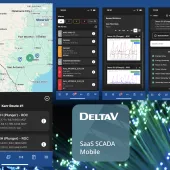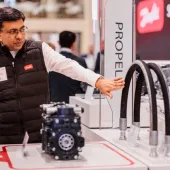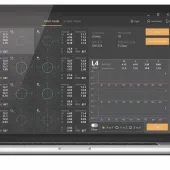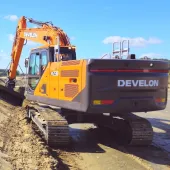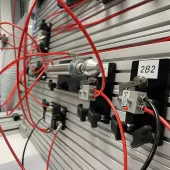Martin introduce the N2 Position Indicator
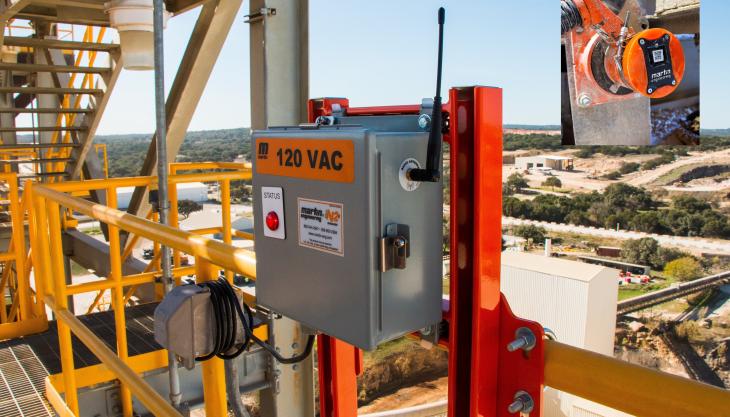
Automated monitoring and reporting system for Martin Engineering conveyor belt cleaners
IN a move to continue their leadership in the development and implementation of advanced technologies for conveyors and other bulk material handling applications, Martin Engineering have announced a belt cleaner position indicator that monitors the blade and both tracks and reports its remaining service life.
The intuitive Martin N2 Position Indicator (PI) monitors primary belt cleaner blades and notifies Martin service technicians and plant operations personnel when re-tensioning or replacement is required and/or when abnormal conditions occur.
The PI can be part of a new installation or directly retrofitted to existing mainframes that use the company’s replacement blades. Managers and service technicians can quickly access information on any networked cleaner via cell phone.
Martin offer the equipment, monitoring service and batteries free of charge to qualifying customers. The company will also support the PI components and provide customer alerts cost-free, as necessary, with mainframes and tensioners replaced free for users of Martin belt cleaner blades.
‘There are no annual maintenance fees and no add-on charges for cell phone access,’ confirmed Martin Engineering’s global marketing director, Brad Pronschinske. ‘Most customers using our cleaner blades can take advantage of this technology.’
Position indicators can be mounted anywhere from 3m to 800m from the cellular gateway, and up to 50 units can be monitored by a single Internet-connected gateway, which is usually located at the highest point in the plant, where the cell signal is strongest. The system does not require a cellular line for each PI, instead communicating via radio frequency from each sensor to the gateway.
Operating independently of any plant communications infrastructure, the small physical size and low power requirements deliver a projected battery life of two years. Only the gateway requires a constant 110V power supply.
The device eliminates the need for manual inspections by giving technicians precise information, delivering critical real-time intelligence and reducing exposure to moving conveyors, thereby improving both efficiency and safety. Maintenance planning is simplified by having detailed information available on demand, allowing service personnel to deliver and install replacement wear parts during scheduled outages.
Alerts are also provided automatically when:
- A blade change is required
- Re-tensioning is needed
- A cleaner has been backed off the belt
- There is an abnormal condition
- A substantial change in temperature occurs
- Batteries need replacement.
The software tracks and displays blade status, remaining life, next scheduled tensioning, run time, wear rate, cleaner model, blade type and a number of other details.
‘This capability is a true enabler, bringing a number of benefits,’ observed Mr Pronschinske. ‘Belt cleaner inspection time is basically eliminated, as maintenance personnel no longer need to physically view the cleaner to determine the tension or wear status. It also reduces the time workers need to spend near the moving conveyor, helping to minimize the potential for accidents.’
By relying on actual operating conditions instead of human judgement to monitor blade wear and tension for optimal cleaning performance, the indicator maximizes the blade’s usable surface area and reports with certainty when a blade is nearing the end of its useful life.
Delivering instant, continuous feedback whilst eliminating guesswork – tracking the individual performance and status of each cleaner – the detailed history also provides a maintenance log with service dates and work performed.
The result is an improved return on belt cleaner investments. Replacement parts can be scheduled for just-in-time delivery, and installation can occur during planned downtime instead of emergency stoppages. ‘By monitoring the rotation of the belt cleaner mainframe, the N2 Position Indicator helps managers plan tensioner adjustments and blade replacements during scheduled outages,’ said Mr Pronschinske.
The Position Indicator itself is a robust, self-contained system manufactured from a proprietary grade of polyurethane that is highly resistant to bumps, shocks and knocks, and able to handle typical mine or quarry environments, including those involving wet and sticky materials.
‘The system recognizes how much rotation is acceptable before tensioner adjustment is required,’ explained Mr Pronschinske. ‘It allows our service technicians to know exactly when a belt cleaner needs replacement, even before the customer does. And if excessive movement is detected on any cleaner, an alarm notice will automatically be sent to alert operators to check it immediately.’



